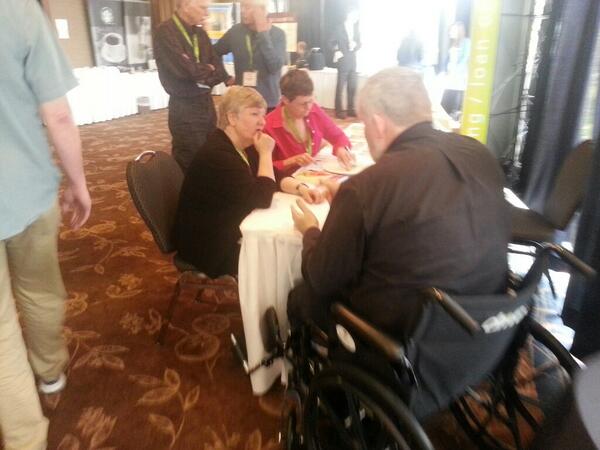Recently I read an article in Nautilus that captured my attention - here it is:
Wow. Great article. I'm still thinking about it days later.
Some excerpts:
"The behavior of each individual in the group is set by the rate at which it meets other ants and a set of basic rules. Its behavior alters that of its neighbors, which in turn affects the original ant, in a classic example of feedback. The result is astonishing, complex behavior. “Individually, an ant is dumb,” Gordon says. She gazes off into the distance and inhales sharply. “But the colony? That’s where the intelligence is.”...
Both of these systems (ants and neurons) accumulate evidence about their inputs—returning ants or incoming voltage pulses—to make their decisions about whether to generate an output—an outgoing forager or a packet of neurotransmitter."
"Each of the brain’s 86 billion neurons can be connected to many thousands of others. When a neuron fires, it sends a signal to nearby neurons that changes the probability that they will also fire. Some neurons are excitatory, and increase the chances that other neurons will fire. Others are inhibitory, and reduce this chance. A combination of inputs from a given neuron’s neighbors will determine if it fires. If two neurons make each other fire often, the synapse between them (a small gap across which chemical or electrical signals are passed) will strengthen, so that they can more readily provide feedback to each other."
“This is where you get the saying that ‘Neurons that fire together, wire together,’ ” says Dmitri Chklovskii, a neuroscientist at the Howard Hughes Medical Institute. But what is often not appreciated about this adage is that wiring also requires the second neuron to send a message to the first that it, too, has fired."
“The only way the upstream neuron knows that the second neuron fired is that it produces a feedback spike. This helps the synapse make the decision to get stronger,” ..
"Feedback is where the similarity with ants begins. “Feedback loops are everywhere on every level. They allow the system to realize that what it used to be doing isn’t working any more, and to try something new.”
"Both ants and brains actually rely on two types of feedback, held in a delicate balance: negative (or inhibitory) feedback, and positive (or excitatory) feedback. “Negative feedback tends to cause stability. Positive feedback tends to cause runaway behavior,”... “These two simple rules make something very powerful.”
"Czaczkes mentions a tale involving the South American army ant, which unlike the harvester ant, relies on pheromones for navigation. In 1936, ant biologist T.C. Schneirla watched a group of army ants fall into an “ant death spiral” as they created a pheromone trail completely around a large tree. The lead ants, Schneirla noted in a 1944 paper, discovered and followed their own pheromone trail. More and more ants joined in, following an endless positive feedback loop around the same tree, continuing for days through pouring rain until the ants began to die from exhaustion."
“Relying only on positive feedback can get you stuck like this,” said Czaczkes. He would later show that positive feedback was balanced by negative feedback in the black garden ant, and that negative feedback allowed for rapid adaptation to the environment."
"Similar feedback networks are found in the brain, both at the level of individual neurons and of the whole brain. Just as the discovery of a cache of seeds by one or two harvester ants can trigger a massive exodus from the nest, the entry of a few sodium ions into a neuron can trigger a massive influx."
"This positive feedback raises the voltage of the neuron past a certain threshold, causing it to fire and temporarily stop the influx of sodium ions, while simultaneously letting potassium ions flood out... activity of individual neurons induces electromagnetic fields around the brain that can be recorded with electroencephalograms (EEGs). The EEG signal, too, is a form a positive feedback."
My bolds.
I must interject here to remind readers that "positive feedback" used here is not the same meaning as the conventional social meaning, which is "always say nice things to people". The scientific meaning is "process in which the effects of a small disturbance on a system include an increase in the magnitude of the perturbation." Snowball effect. Avalanches. That kind of thing.
Researchers can study ants a lot easier than brains; behavioural emergence and positive and negative feedback loop observations can eventually be extrapolated to and tested in some yet to be determined way in brains themselves, once the parameters have been figured out and they know what they are looking for. Pretty cool.
Anyway, the thing that jumped out at me was the part about the ants circling the tree until they died in the rain, the positive feedback loop scenario. Poor ants.
Like microphone squeal.
Like pain? I think so. Maybe.
I'll never be able to think about pain neurotags again without thinking about positive feedback loops, and that unfortunate bunch of ants endlessly looping around the base of a big tree, doomed by the pheromonal situation they never asked for but got anyway, unable to exit their colony's death spiral. Natural selection is so completely, blindly, unfeelingly mechanical...
May 1/ 2014
Back in to link to Erik Meira's excellent blogpost, Getting rid of something positive. All about positive feedback and getting rid of microphone squeal, in our work as therapists. Great post.

